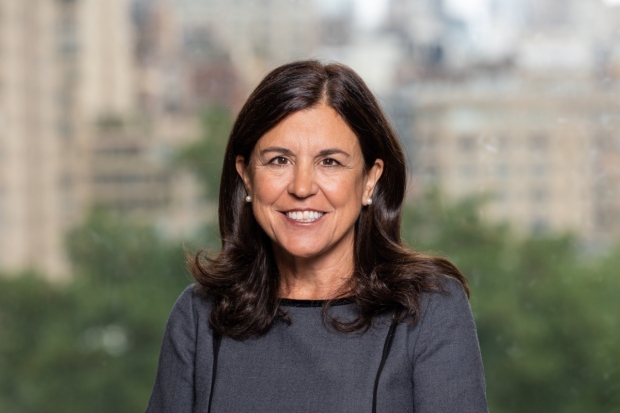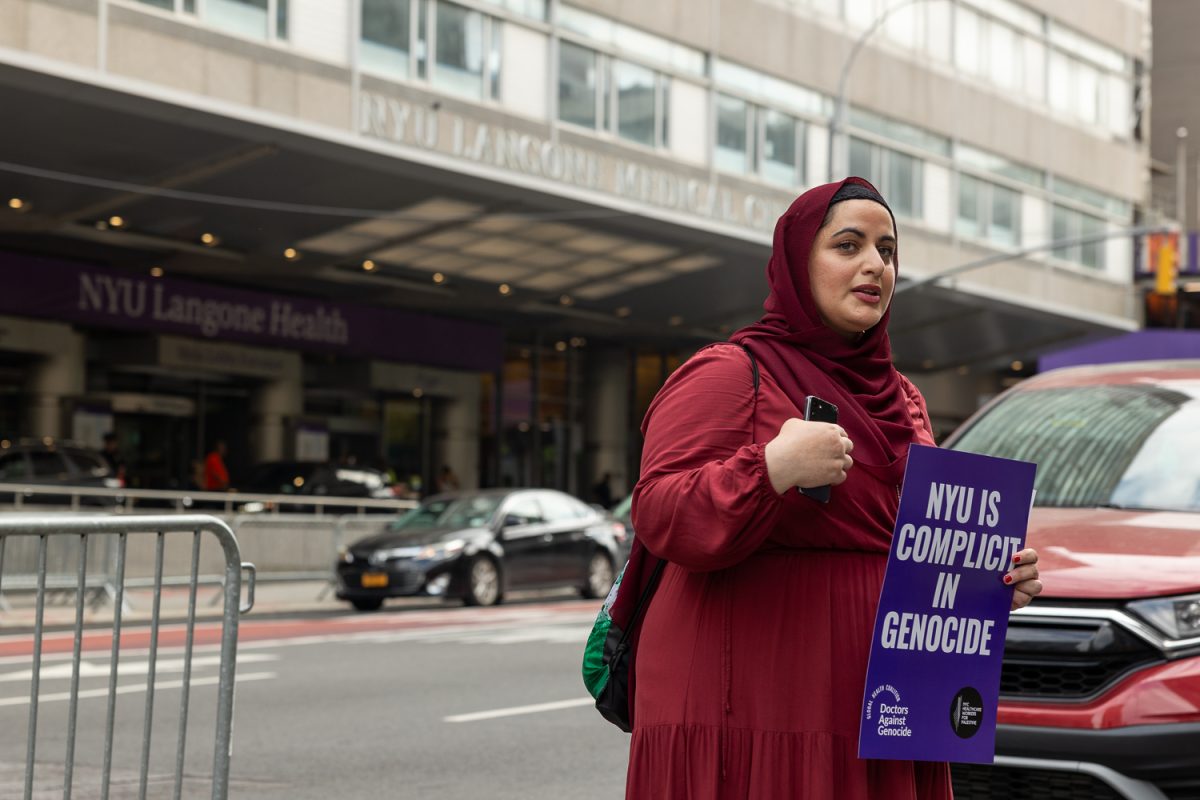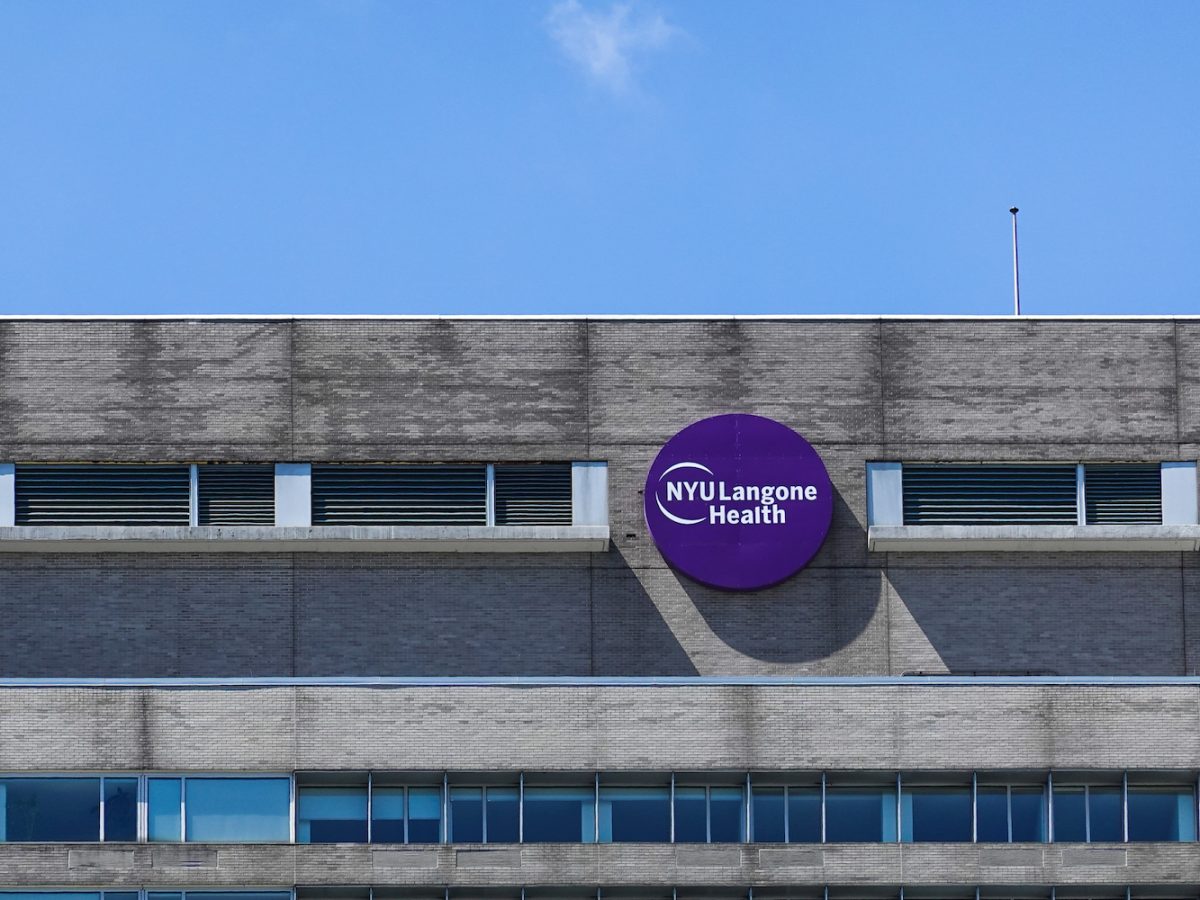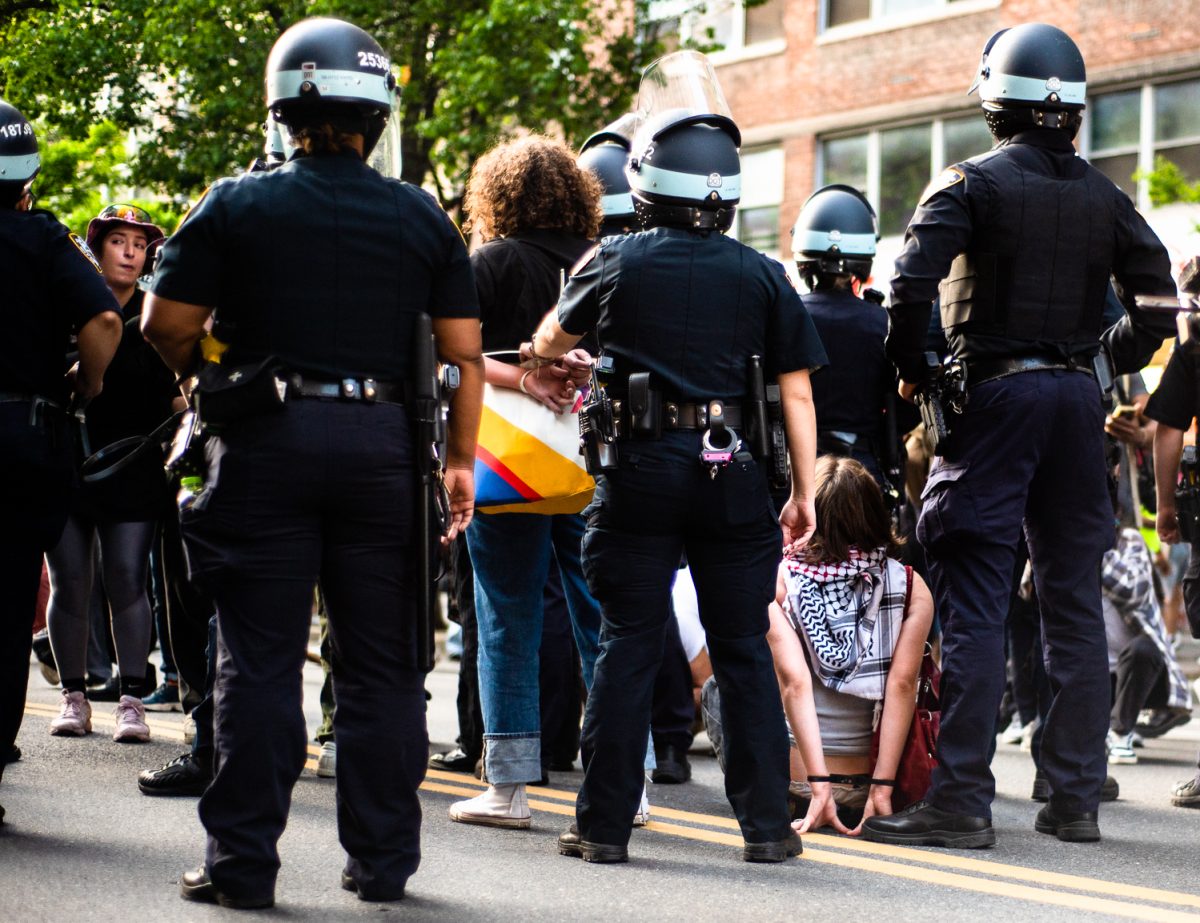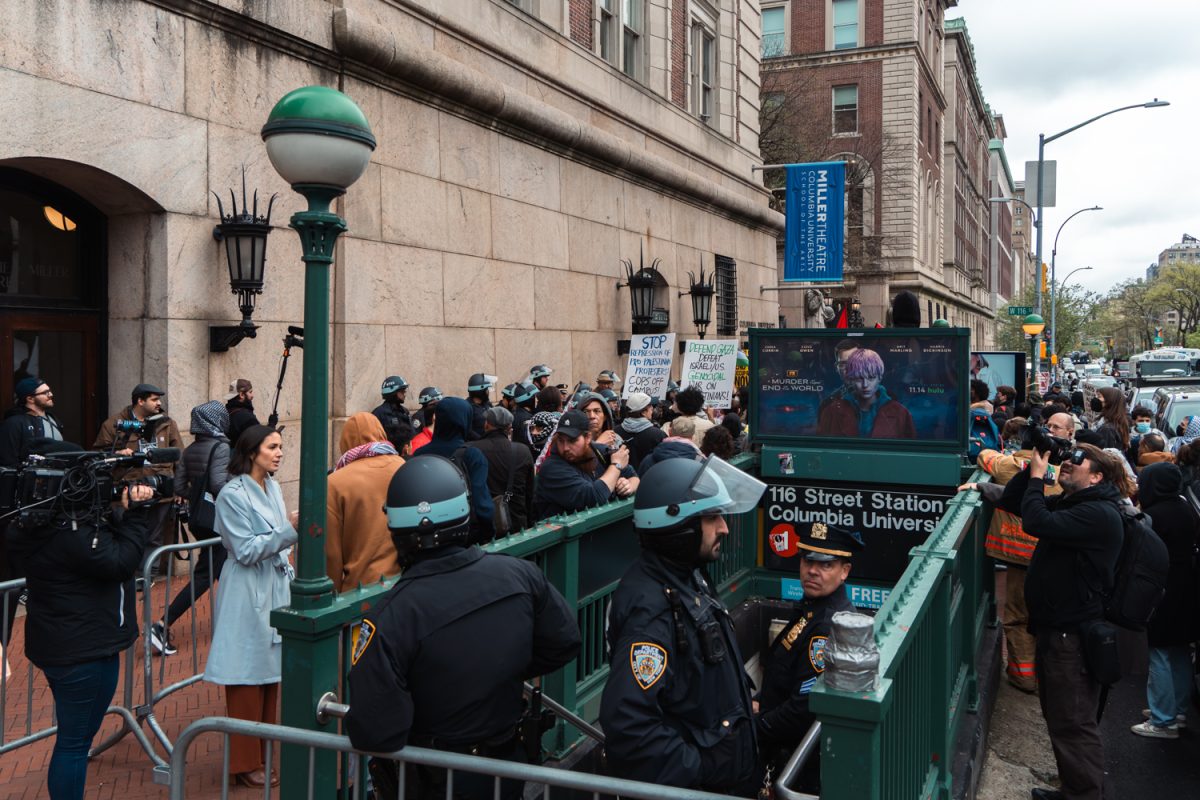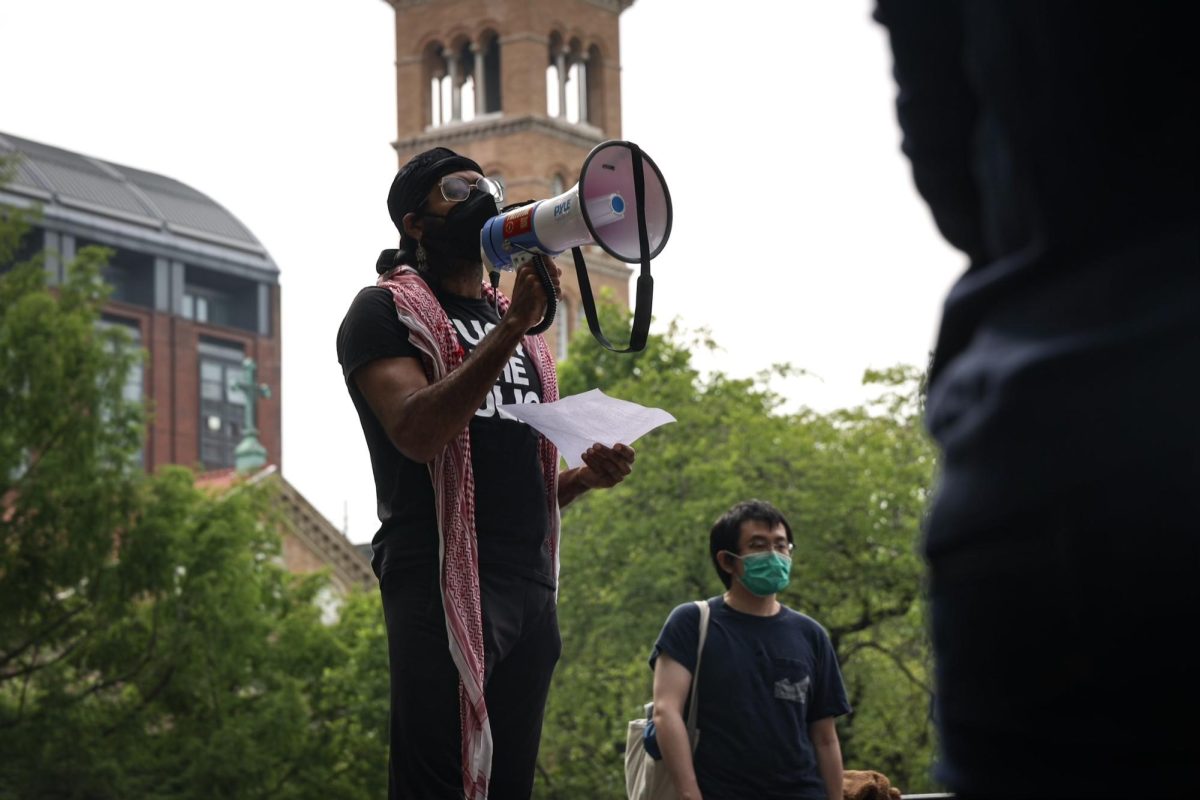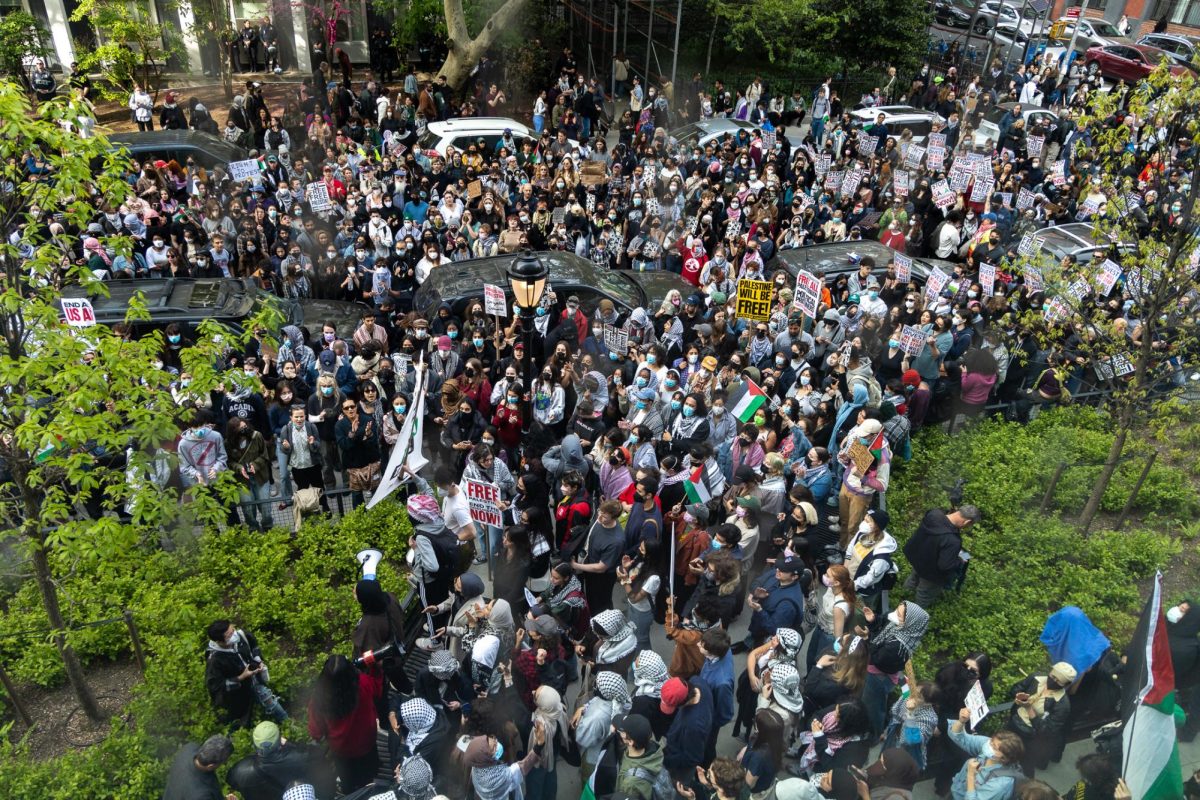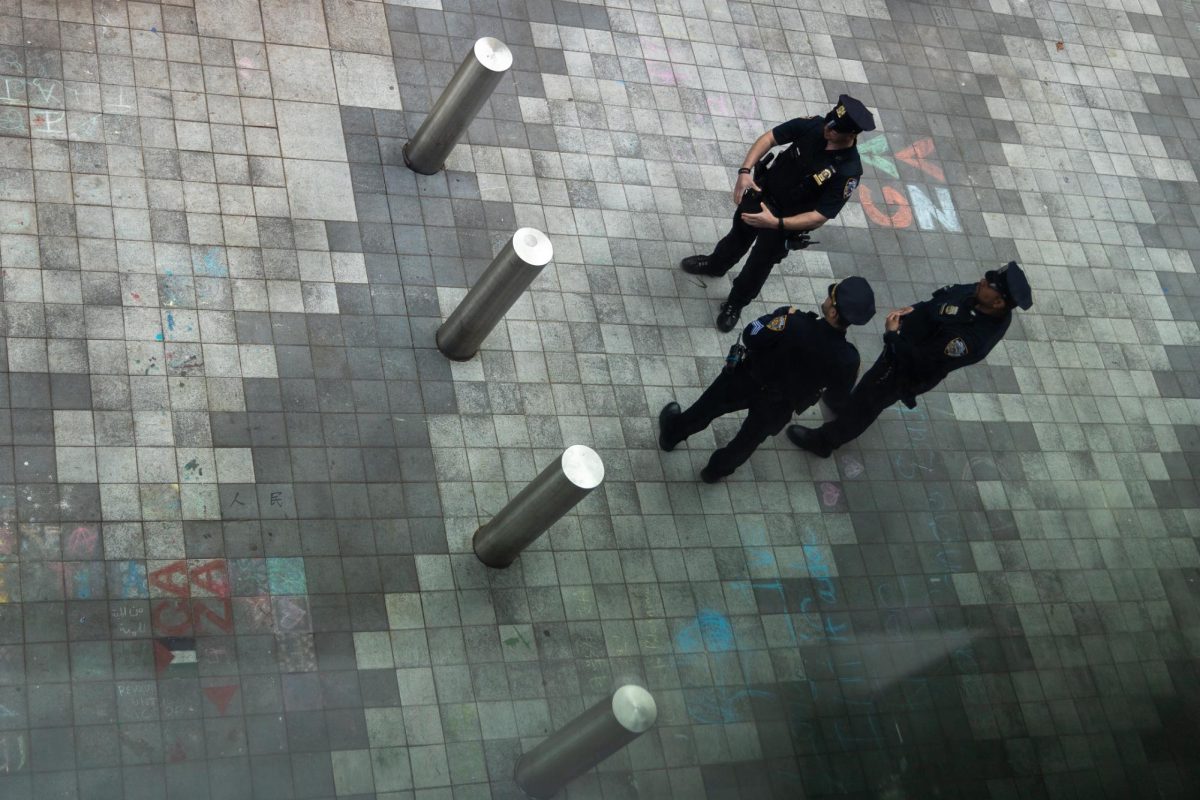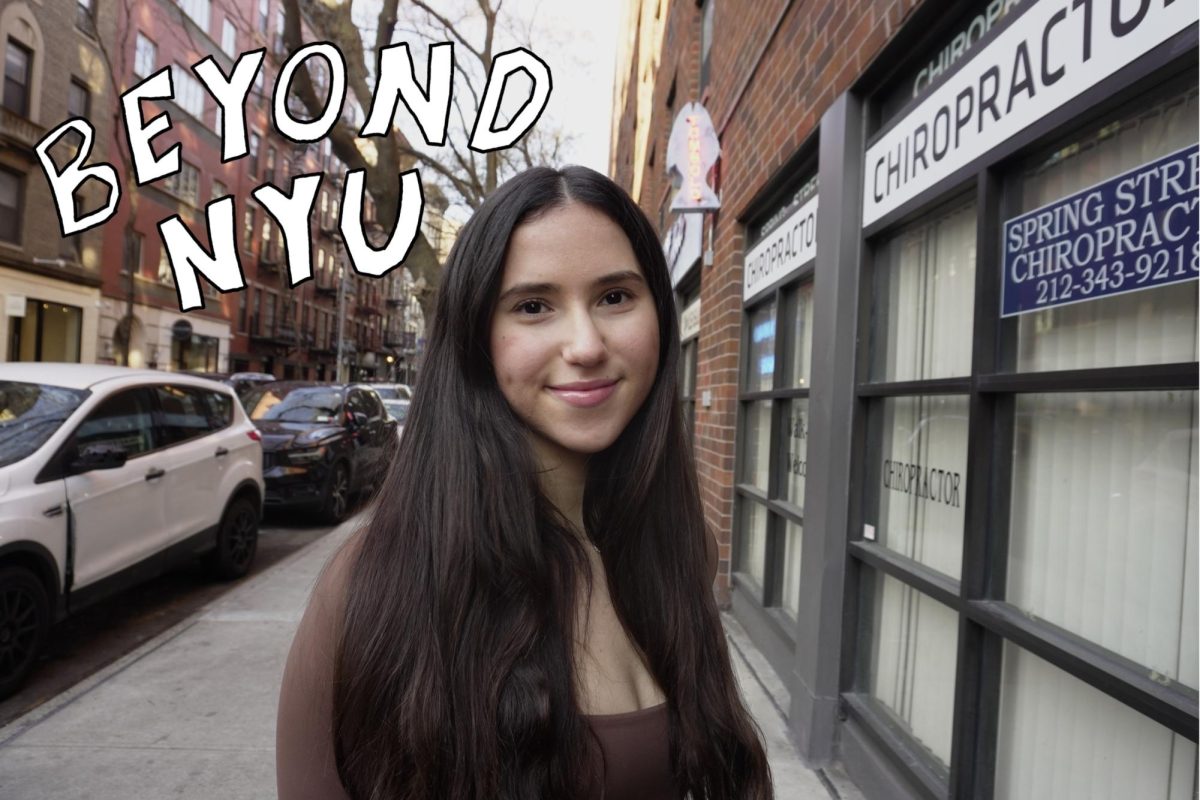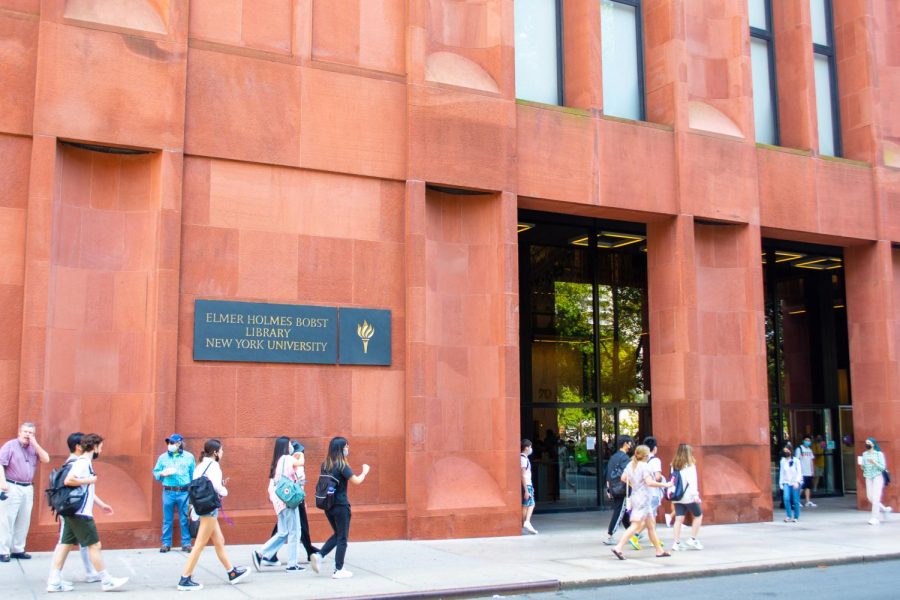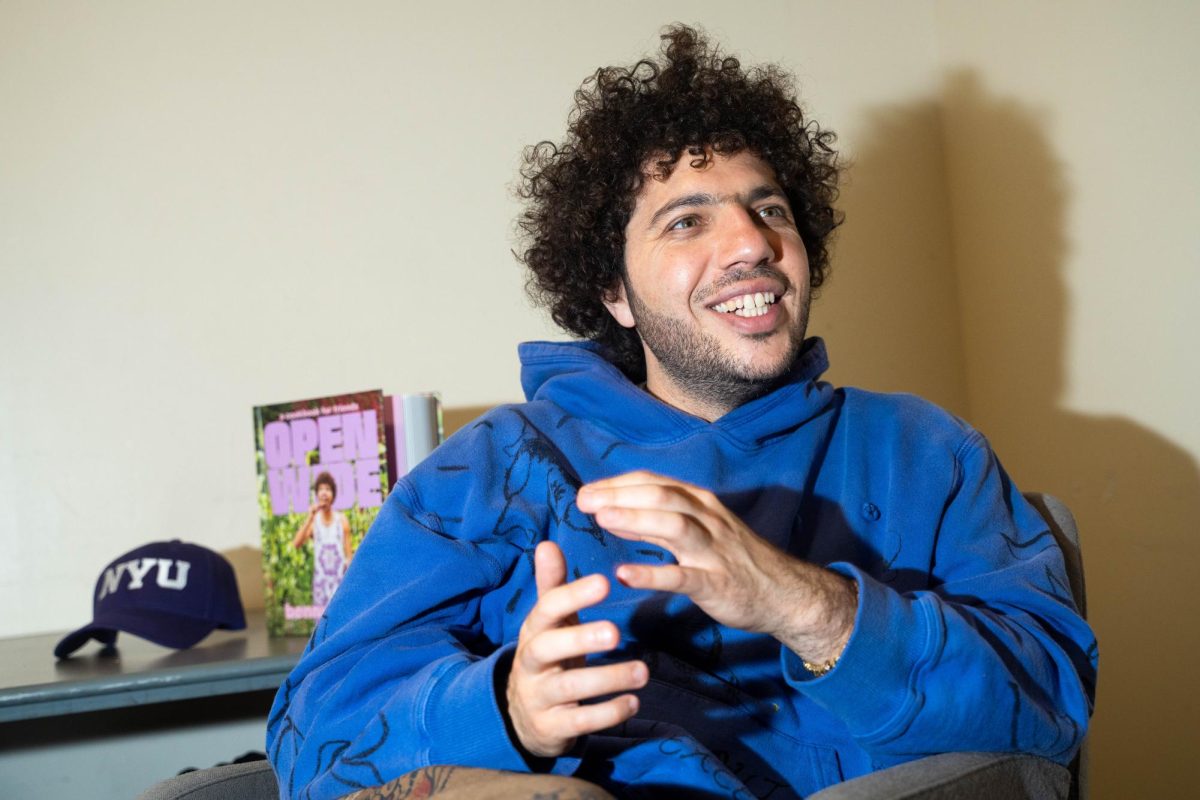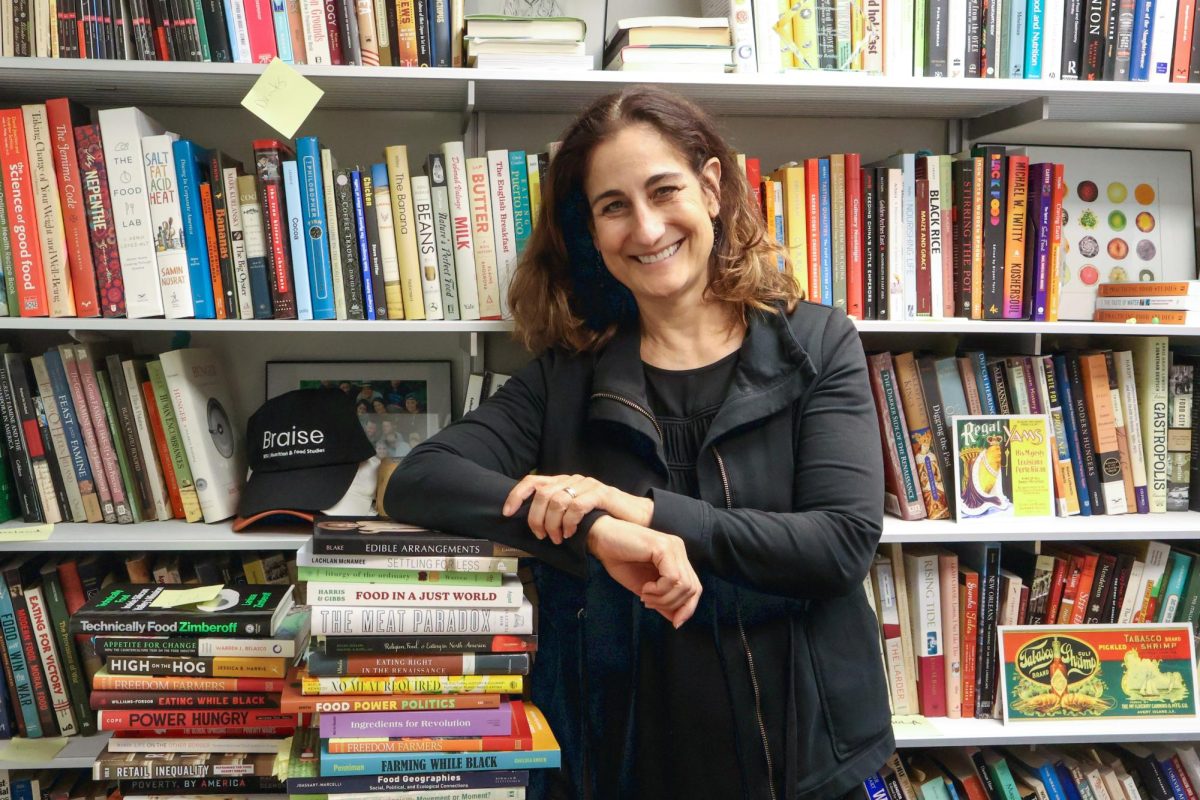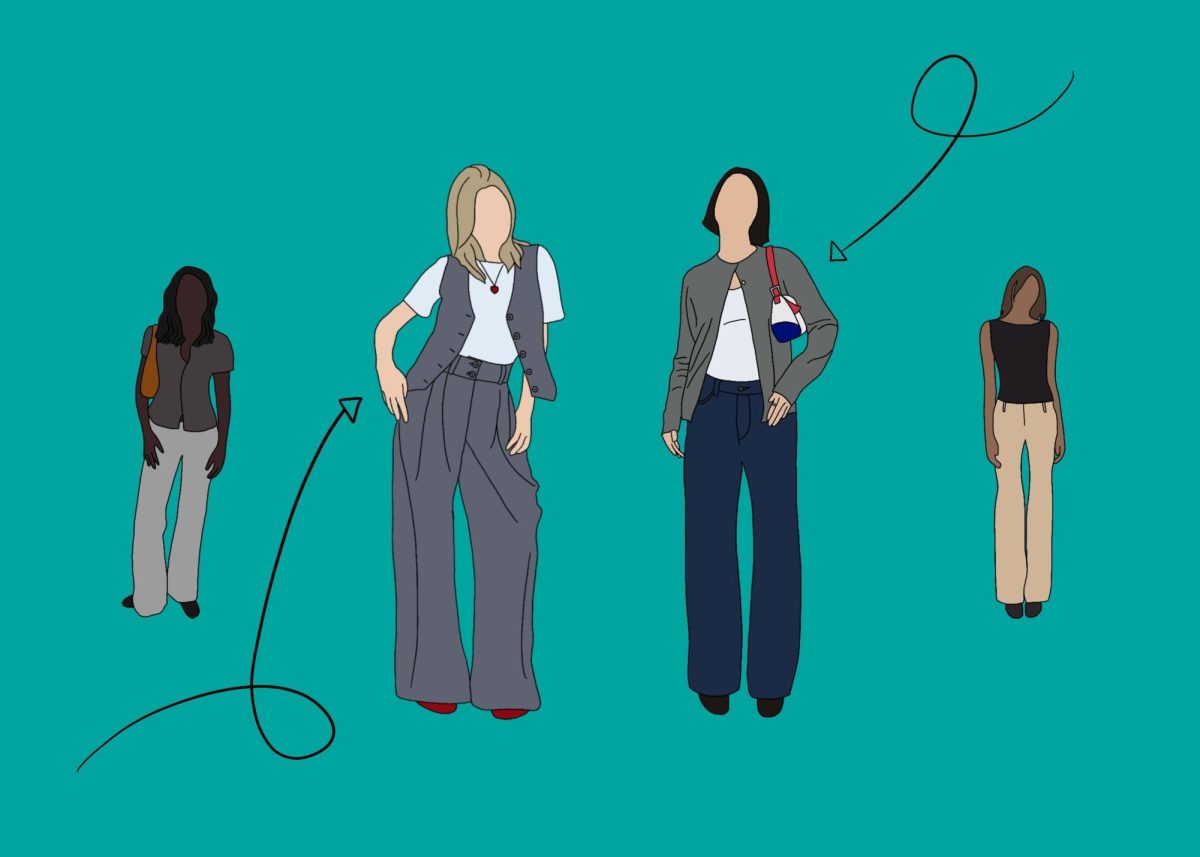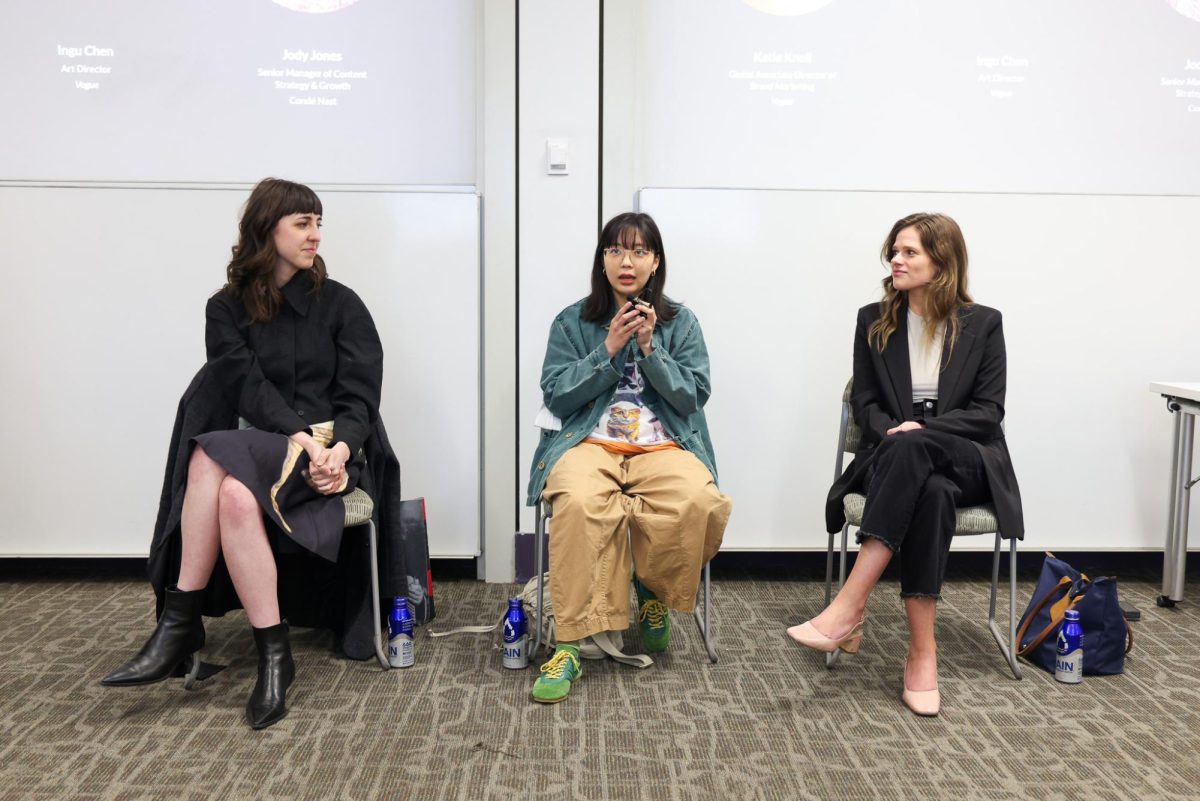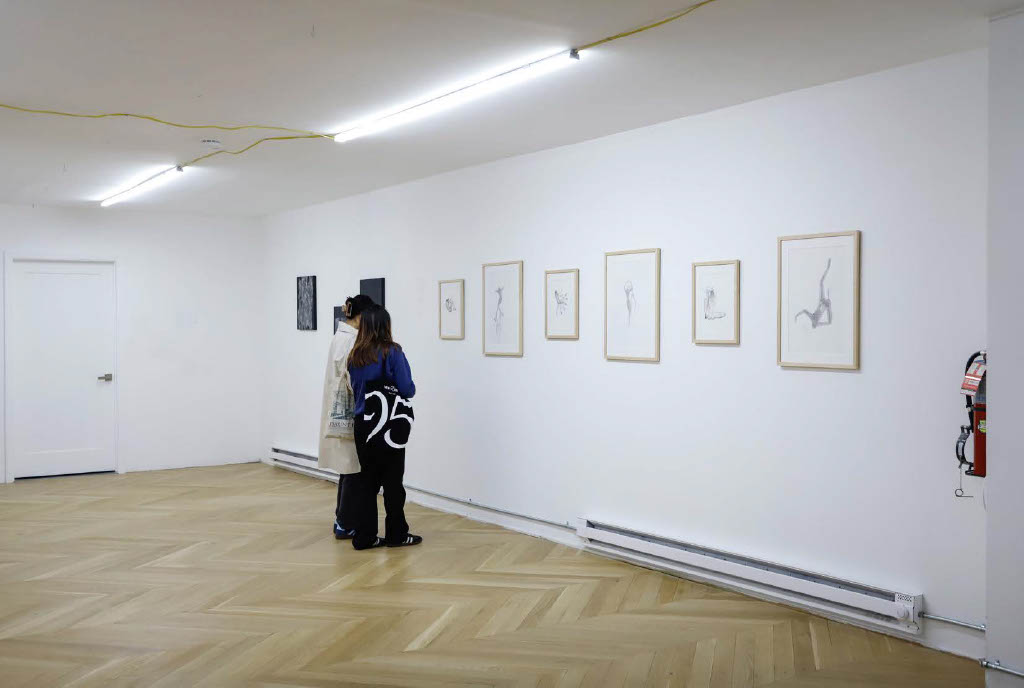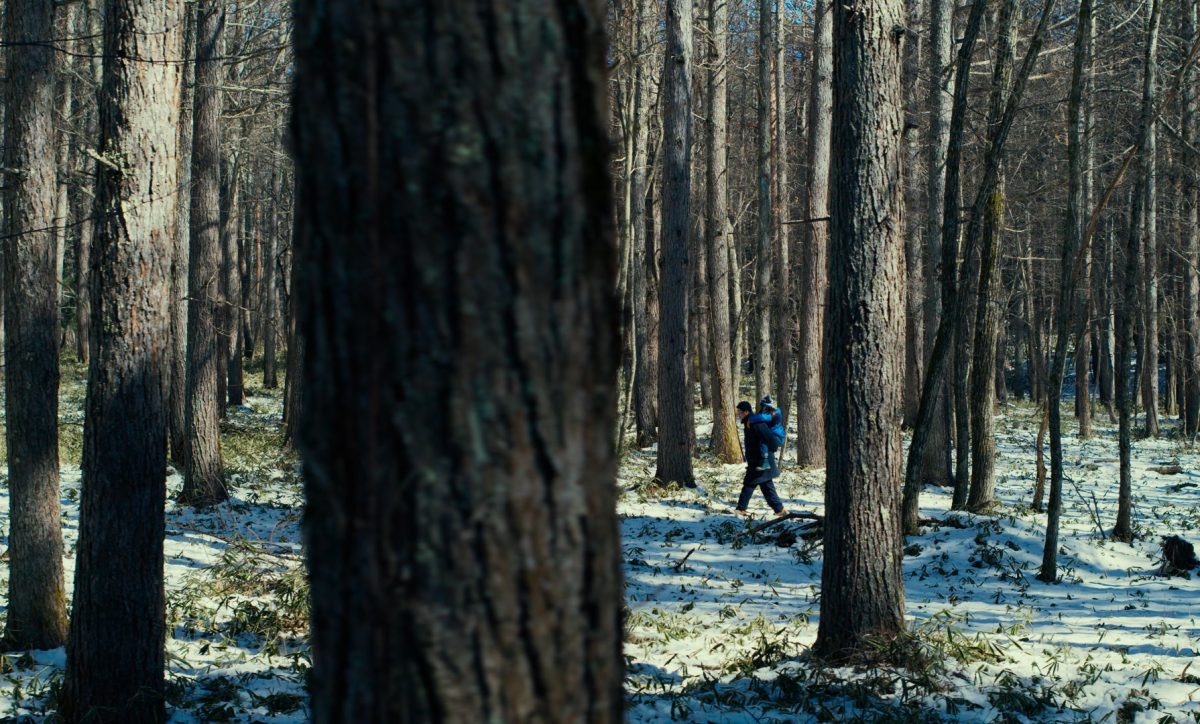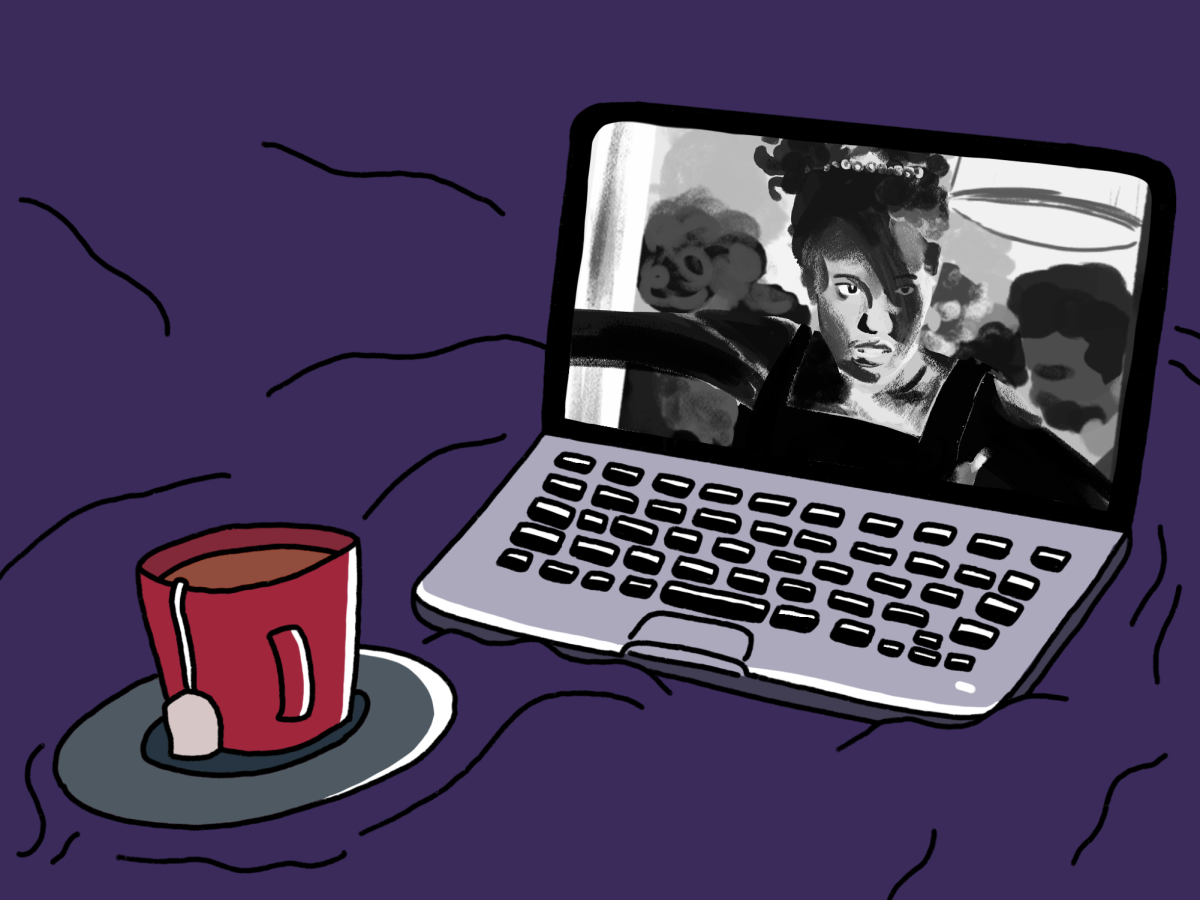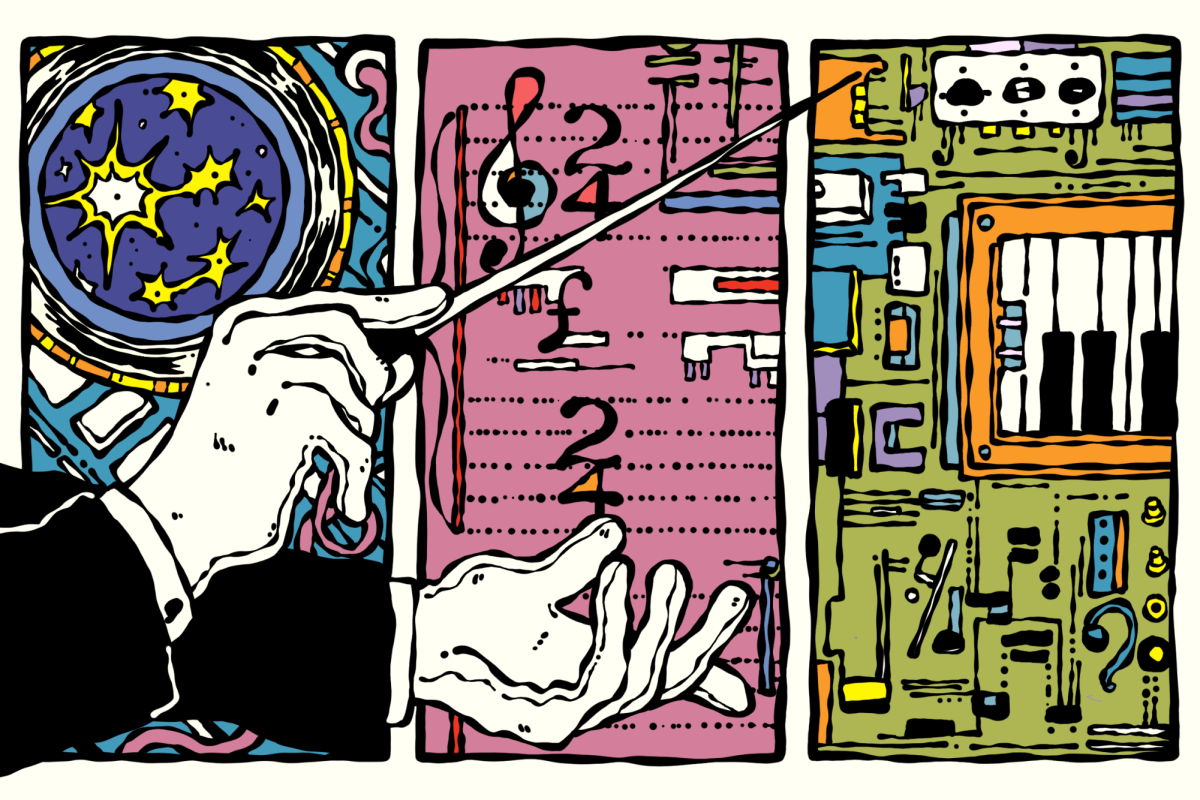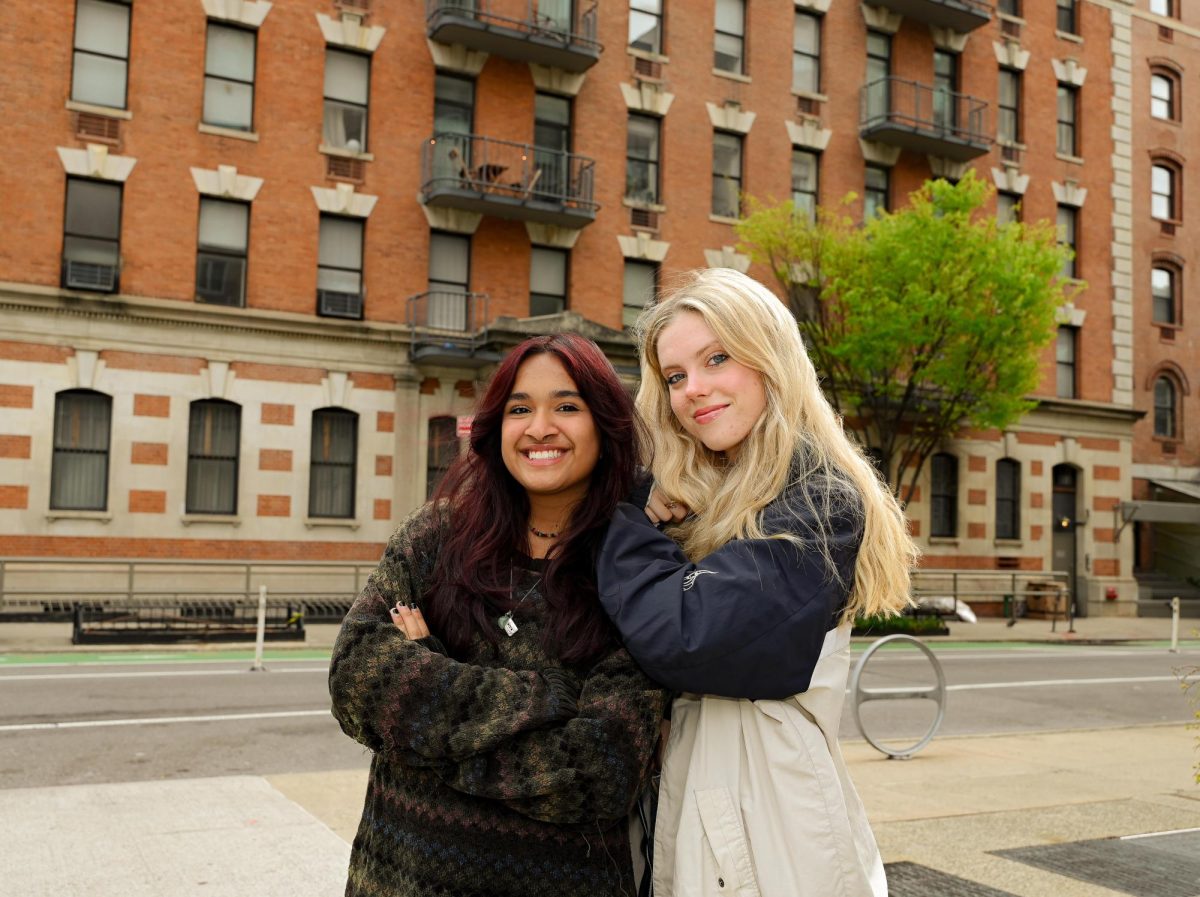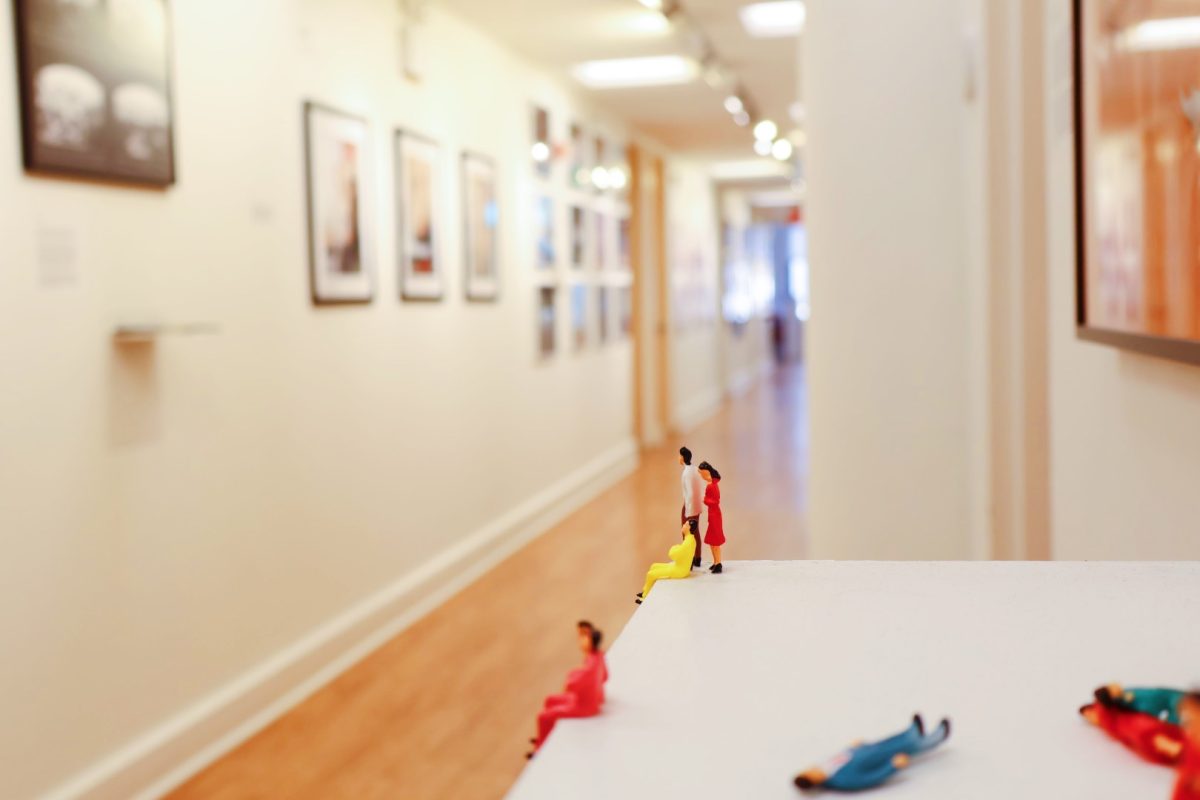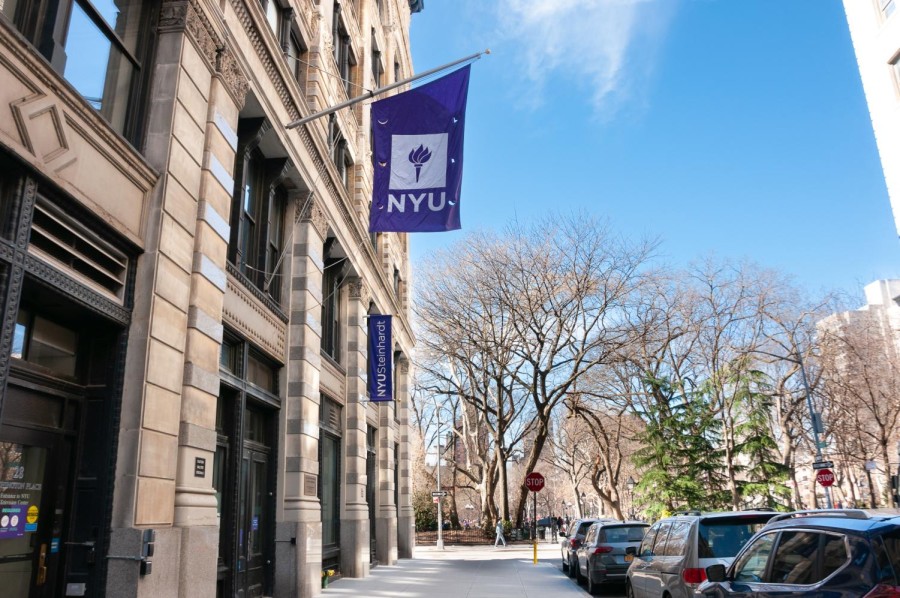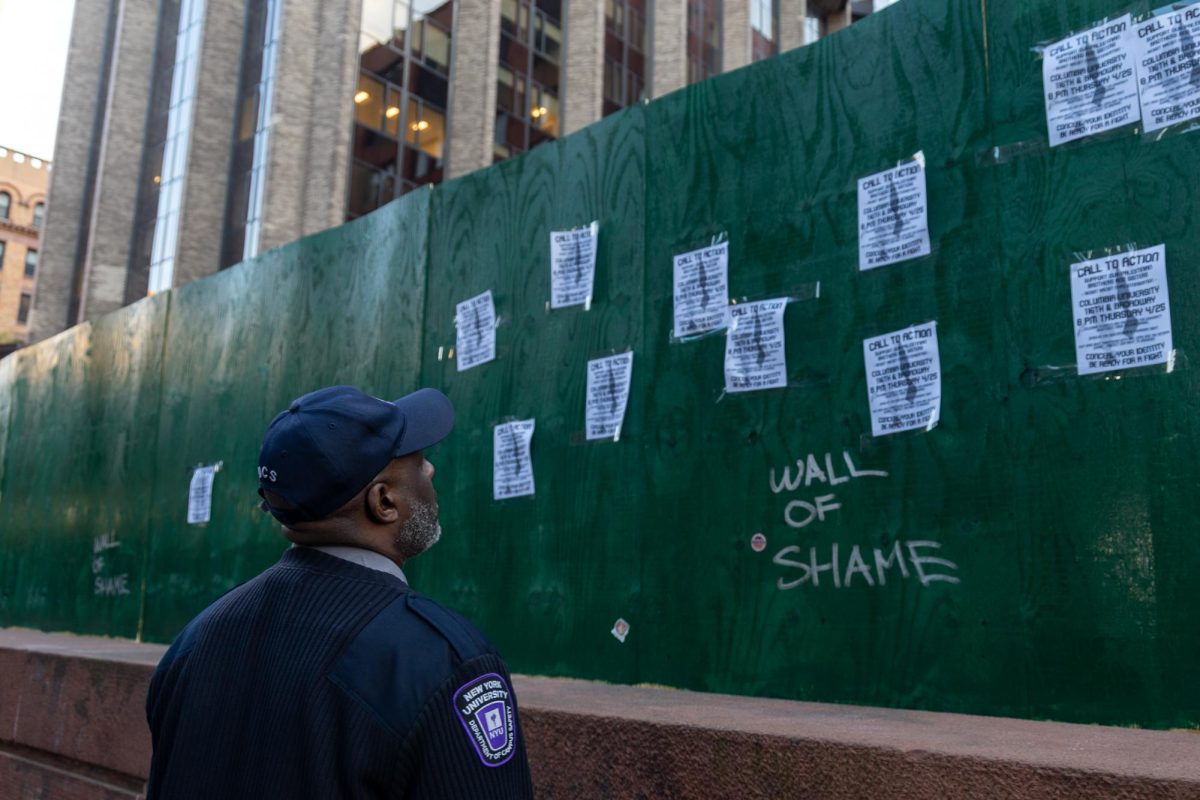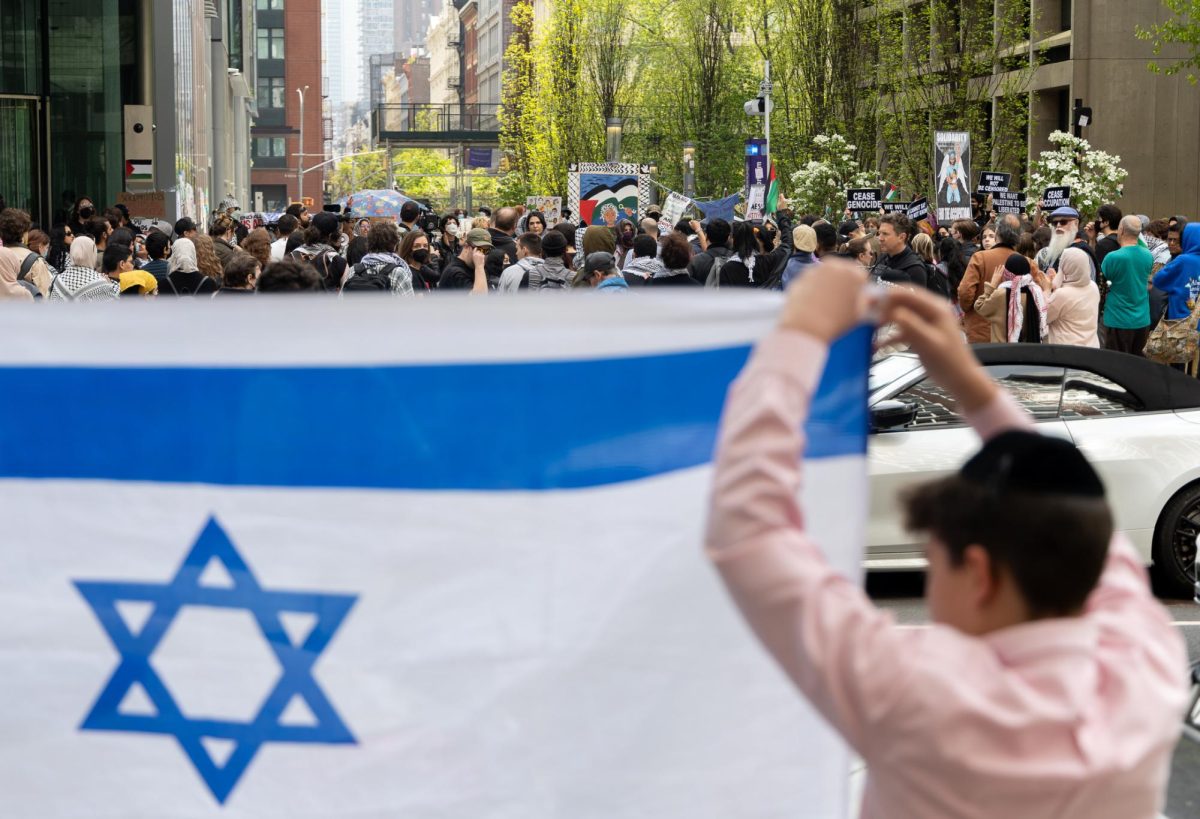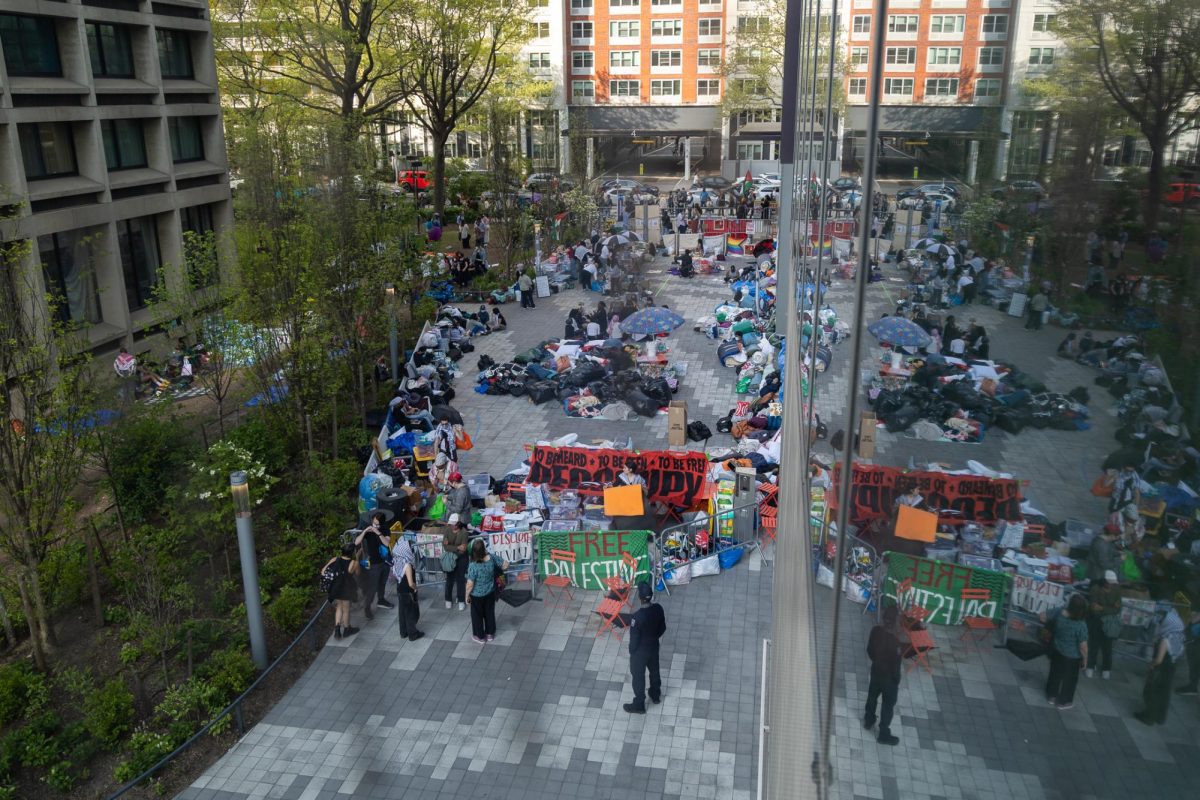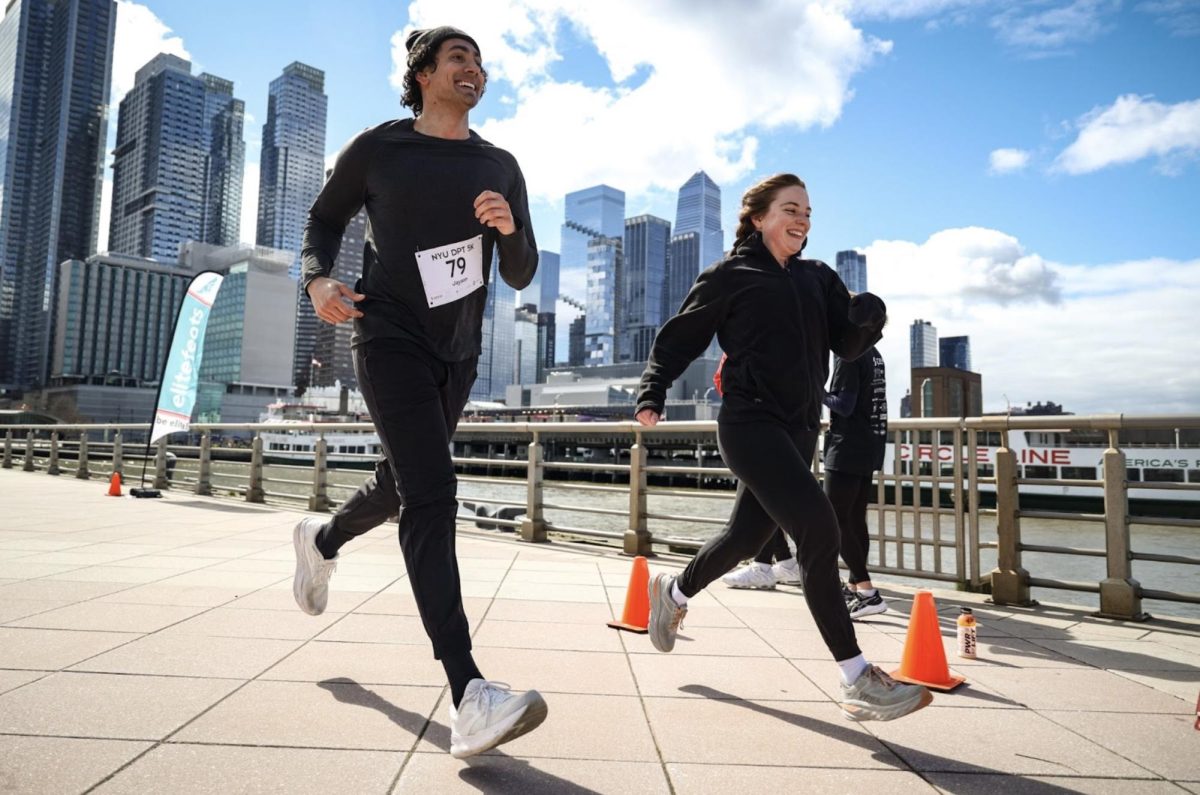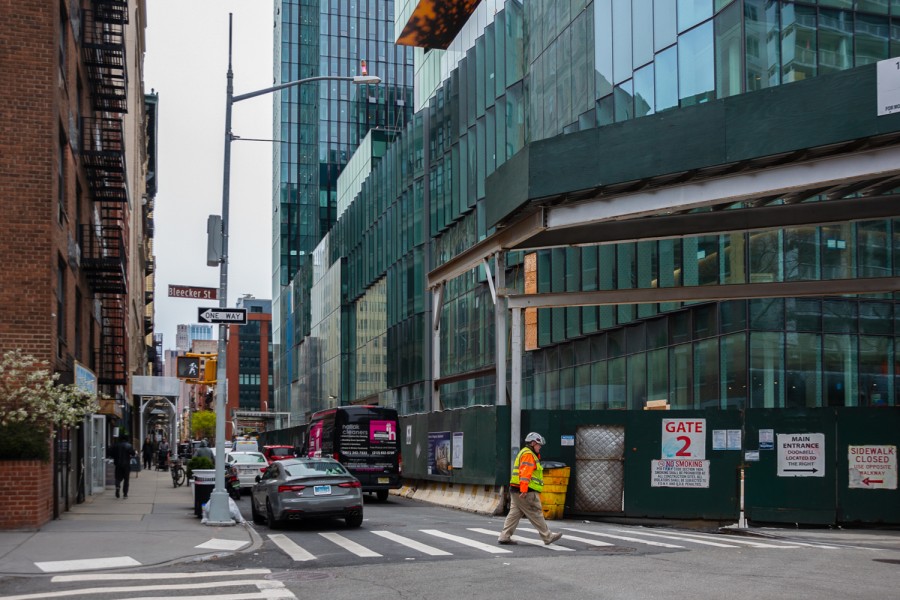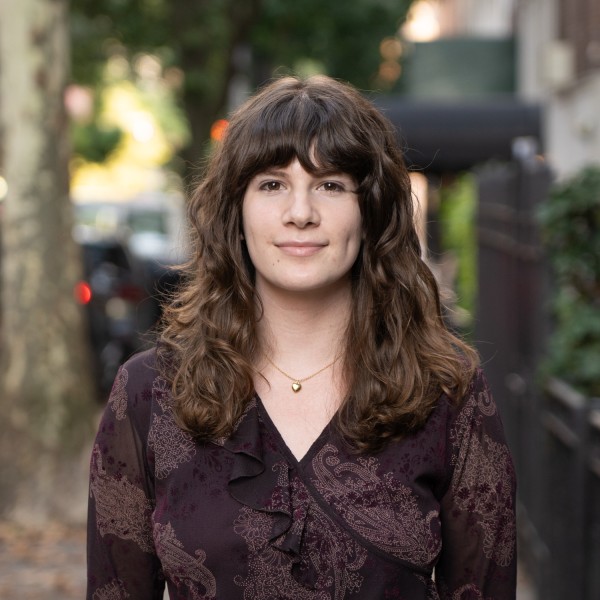Opinion: NYU needs to talk about gentrification
More university resources should be put toward educating students who aren’t from New York about the role they play in perpetuating gentrification.
File photo: The Paulson Center under construction in April 2022. (Kiran Komanduri for WSN)
March 1, 2023
With the completion of NYU’s newest building at 181 Mercer St., conversations about the university’s role in gentrifying New York City have resurfaced. It’s a topic that crops up often, especially at the beginning of each semester with the influx of out-of-state students who make their existence painfully obvious, especially around Washington Square Park. Their arrival leads to recurring stereotypes — students crowding sidewalks while traveling in packs or wearing their bright purple lanyards on the streets of Greenwich Village. As humorous as it might be, this glaring presence makes a substantial impact on the cultural and economic environment NYU students inhabit.
NYU owns around 14 million square feet of land across about 110 buildings, which now includes the Paulson Center. The university’s major presence contributes to gentrification, or the influx of wealthier residents — students, in this case — into an established urban neighborhood. With it comes a rise in rent and property value — influenced by renovations like the $1.2 billion building — and alterations to the neighborhood’s character and culture. NYU’s disregard of Greenwich Village’s population and land has angered residents, with one even describing the new building as a “monstrosity.”
While we can verbally condemn the university for constructing new buildings or displacing New York residents all we want, it’s time for NYU to do more to educate students about our place within the wider city landscape. Although the university can’t exactly demolish the new buildings that have been built in local neighborhoods, NYU could at least mitigate some of the insensitivities on students’ part by giving us the adequate resources to explore and respect the city we’re occupying.
To start, the university could host educational outings to all five boroughs to encourage students to expand their knowledge of New York beyond Manhattan and Brooklyn. This programming could be included in classes, by having professors introduce students to New York City history museums, institutions and opportunities beyond those close to the NYU campuses.
NYU has already taken some steps to lessen its immediate impact on New York gentrification, including their support of the Urban Displacement Project, which monitors and reports on gentrification trends in urban areas. However, the majority of its efforts when it comes to educating students tend to be focused on its study away locations.
NYU prioritizes learning “Beyond The Classroom” in all of its study away locations, encouraging students to familiarize themselves with the cultures and communities of these countries. Why doesn’t the university offer a similar program for New York City itself? The first option of experiential learning for students shouldn’t be to study abroad, but to give back to the city we’re living in.
Part of the impact of the student and university presence in New York stems from our ignorance about the communities that exist outside of the NYU bubble. By making ourselves aware of these communities, we can break out of the mindset that New York City is strictly for tourists, and recognize the people that have had homes here much earlier than us to hopefully be a little more mindful of how we treat their spaces.
Exploration could even be encouraged by incentivizing students with university-funded discounts to small businesses that are farther from campus. A report by Appleseed, an economic analysis firm, determined that higher education institutions such as NYU contribute to Greenwich Village’s economy and well-being by generating jobs, business and tourism.
“For Greenwich Village merchants and business, Christmas comes in September when college students return from the summer break and make area cash registers ring,” wrote William Kelley, the executive director of the Village Alliance, an organization dedicated to revitalizing Greenwich Village businesses and public spaces — including creating a system called the Village Bucks Community Gift Card to support local merchants.
Students make up a large portion of the Greenwich Village economy, and where we eat and shop matters. If we continue to frequent chains or corporations displacing local businesses, it further solidifies NYU’s negative mark on New York. Instead, an effort from NYU to incentivize students to become consumers of a wider variety of locations could mitigate some of the financial harm our gentrification is causing.
Just as we need to be mindful of other landscapes when touring a new country, NYU should implement more programming or basic reminders to students — especially first-years — on how to treat the city respectfully. Simple gestures like learning to make space on the sidewalk can go a long way.
WSN’s Opinion section strives to publish ideas worth discussing. The views presented in the Opinion section are solely the views of the writer.
Contact Nikkala Kovacevic at [email protected].


